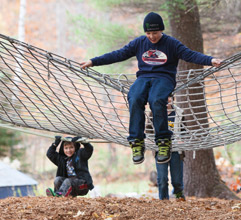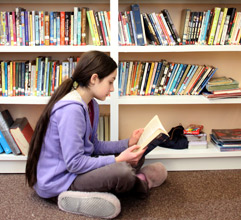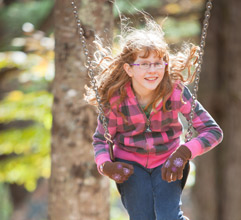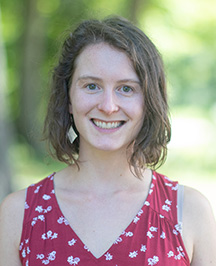Fifth Grade




Cate Huynen
Fifth Grade Teacher
Clark University, BA, MA
Elem. Ed. Cert.
Fifth grade offers new opportunities to participate in sports and students learn from a wider variety of specialized teachers. Fifth graders mix with students in other grades during STEAMS blocks, After School Enrichment, weekly Sharing Assemblies and Clubs.
In Language Arts class, we read short stories, poems, plays and novels. Students read silently and orally, with a partner and in small groups, and are read to by the teacher. Spelling and grammar instruction include individual, small group and whole-class activities. Students write regularly, with emphasis given to idea development, the quality of content, attention to mechanics, grammar and conventional spelling. Research, using both digital and print sources, provides opportunities to expand literature and language knowledge. Students practice cursive handwriting, keyboarding and a variety of digital skills.
The Math curriculum presents important concepts in the context of engaging problems, and also provides personalized, differentiated skills practice. Students will learn to: write and interpret numerical expressions; analyze patterns and relationships; understand the place value system; perform operations with multi-digit whole numbers and with decimals to hundredths; use equivalent fractions as a strategy to add and subtract fractions; apply and extend previous understandings of multiplication and division to multiply and divide fractions; convert like measurement units within a given measurement system; represent and interpret data; understand concepts of volume and relate volume to multiplication and addition; graph points on the coordinate plane to solve real-world and mathematical problems; classify two-dimensional figures into categories based on their properties.
Science uses the Next Generation Science Standards as a guide. The areas of study for fifth grade include: Matter and Its Interactions; Motion and Stability; Forces and Interactions; Energy; From Molecules to Organisms: Structures and Processes; Ecosystems: Interactions, Energy and Dynamics; Earth’s Place in the Universe; Earth’s Systems; Earth and Human Activity; and Engineering Design. Learning happens through demonstrations, activities, reading, discussion and experimentation.
In Social Studies, students explore the basic geography of our nation, become familiar with the location of our states and their capitals, and gain an understanding of the history of our nation’s development. Students examine indigenous peoples, early explorers, the Colonial Period, the Revolutionary War and the development of our government, westward expansion, the Civil War and the Industrial Revolution. Students complete research to develop their understanding and extend their knowledge of our nation.
In Spanish class, the goal is to create situations where the vocabulary is contextualized. As students are exposed to the language, they move from being able to recognize a word and to react to it, to being able to use it in a given situation. The main tool to contextualize language is through stories created in class using a lot of visual support. Songs and games also play an important role. In fifth grade, after several years of exposure to mostly spoken language, written language takes a major role. With the help of written language and their wider range of vocabulary, class stories and reading activities become more complex. The focus is on reinforcing and expanding the following areas: greetings, colors, numbers (0-1,000,000,000), time telling in connection to daily activities, body parts, emotions, clothing, common objects at school and at home, foods, animals and family vocabulary, extended family, to express likes and dislikes and action words.
In Art, students explore the elements and principles of shape, form, line, color, texture, value, composition, unity, variety and perspective. Fifth graders develop and improve their skills in a variety of media, including pencil, pastel, watercolor and acrylic paint, clay and a variety of sculpture materials. Particular emphasis is placed on one-point perspective drawing, facial proportions, the human figure in art, and art as a means of personal expression. The year includes a unit on masks and identity inspired by mask-making in cultures around the world. Students create several masks using different media, and learn about the use of masks throughout history. During the year students are introduced to a variety of master artists and are encouraged to discuss and interpret artwork; students also have the opportunity to share their own artwork with their classmates.
Music class integrates singing, playing music, movement, speech and drama. Fifth grade sees an increased emphasis on music theory and composition. Alto and tenor recorder may be introduced into the ensemble by student choice, as well as piano and guitar. We will look for opportunities to connect the work to world music history.
The goals of the Physical Education classes are to expose children to a variety of activities, games and sports; to teach teamwork and friendly competition; to encourage students to give their best; to let them experience a variety of activities so that they can enjoy and be physically fit for a lifetime. The classes encourage and enable all students to have experiences of success and good sportsmanship.
In Health Education, the main topics covered are social health, physical activity, nutrition, puberty, injury prevention, emotional health, personal health and wellness, responsibility, alcohol, and summer safety. Students will learn concepts through literature, powerpoints, reflection, discussion, group work and games. The Health Education program has been developed in accordance with guidelines of the State of New Hampshire Health Education Standards and the National Health Education Standards.
During STEAMS block, third, fourth and fifth grade students may work together as a group and other times may break up into smaller mixed-age groups. The focus of the activities is on Science, Technology, Engineering, Arts, Math and Service. The year begins with SPIRALS, a unit on sustainability designed by a research group at UNH. Once that is complete, students and teachers decide on another theme. The goal of the block is to have students exploring their interests, working in mixed-age groups, and spending more time integrating ideas and activities.
